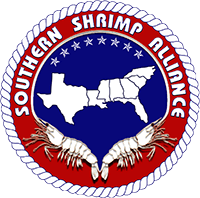For the last several years, the Southern Shrimp Alliance has compiled and distributed information from the Fishery Monitoring Branch of the National Oceanic and Atmospheric Administration (NOAA) Fisheries’ Southeast Fisheries Science Center regarding shrimp landings data from the Gulf of Mexico. These data have helped the industry quickly identify the impact of aberrational events (e.g., hurricanes; fresh water diversions; oil spills) on the commercial fishery. NOAA’s information has also confirmed the resilience and continued economic importance of the commercial shrimp industry to coastal communities throughout the Gulf.
At the same time, similar information regarding monthly shrimp landings in the South Atlantic is not published by NOAA. In result, it has been more difficult to regularly monitor and assess the impact of aberrational events (e.g., hurricanes; black gill disease; changes in water temperature) on the industry operating from the Atlantic coast of Florida up to North Carolina.
Currently, the U.S. shrimp industry – along with all other American commercial fishing industries – is facing unprecedented challenges in a market adjusting to the measures taken to reduce the spread of COVID-19. Additionally, the U.S. shrimpers also confront an unprecedented volume of imported shrimp entering our market at ever declining prices.
In these circumstances, it is more important than ever for industry members to have accurate and timely information available regarding the health and status of our industry. Over the past few months, the Southern Shrimp Alliance has been working with state and federal government officials to obtain monthly information regarding shrimp landings on the Atlantic coast and to develop methods for reporting these data on a routine basis. Based on these discussions, we are optimistic that data regarding Atlantic coast shrimp landings will be available for publication on, at a minimum, a quarterly basis.
Through the Florida Fish and Wildlife Conservation, the state of Florida currently makes monthly commercial fisheries landing data obtained from trip tickets, including shrimp landings, available through its “Commercial Fisheries Landings Summaries” page (https://public.myfwc.com/FWRI/PFDM/ReportCreator.aspx). These data are available from 1986 through 2020, with the most recent reporting subject to further revision and not final.
Further, the Division of Marine Fisheries of the North Carolina Department of Environmental Quality has provided the Southern Shrimp Alliance with monthly shrimp landings data from 1994 through 2020, again with the most recent data being reported as preliminary and subject to further revisions.
The Southern Shrimp Alliance has compiled these data in charts accessible at the links below. For both of these states, recent landings information, reported in historical context, show the continued significance of the U.S. commercial shrimp industry to the economy of coastal communities. Substantial quantities of fresh, wholesome, local, wild-caught shrimp continue to be available to American consumers.
Please click the following link to view SSA’s compilation and summary of monthly shrimp landings in the state of Florida from 1986 through March 2020: https://shrimpalliance.com/wp-content/uploads/2020/05/Florida-Landings-by-Month-1986-to-Mar-2020.pdf
Please click the following link to view SSA’s compilation and summary of monthly shrimp landings in the state of North Carolina from 1994 through April 2020: https://shrimpalliance.com/wp-content/uploads/2020/05/North-Carolina-Landings-by-Month-1994-Apr-2020.pdf
